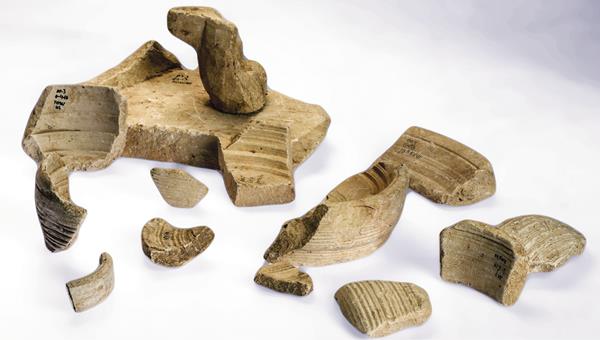“Pure” Garbage—Limestone Vessel Remains
Sidebar to: Jerusalem and the Holy Land(fill)

During the late Second Temple period (c. first century B.C.E.–70 C.E.), Jews living throughout Judea went to extraordinary lengths to observe the Biblical laws relating to ritual purity. Not only could people become impure (e.g., from menstruation, sexual relations, and contact with certain animal remains and human corpses), but so too could the food, drink, and utensils that came into contact with ritual impurity. Pottery is singled out in Leviticus 11:33 as a material that was particularly susceptible to impurity and which, once it had become impure, had to be broken. By the late first century B.C.E., many Jews began to believe that stone was impervious to impurity. They subsequently began to produce a “pure alternative” to pottery—tableware and storage vessels fashioned out of local, soft limestone.a The Gospel of John relates this phenomenon in the wedding at Cana narrative: the six jars that held the water-turned-to-wine are said to have been made of stone, and we are told that this had something to do with “the purity [laws] of the Jews” (John 2:6).
Already a library member? Log in here.
Institution user? Log in with your IP address.

